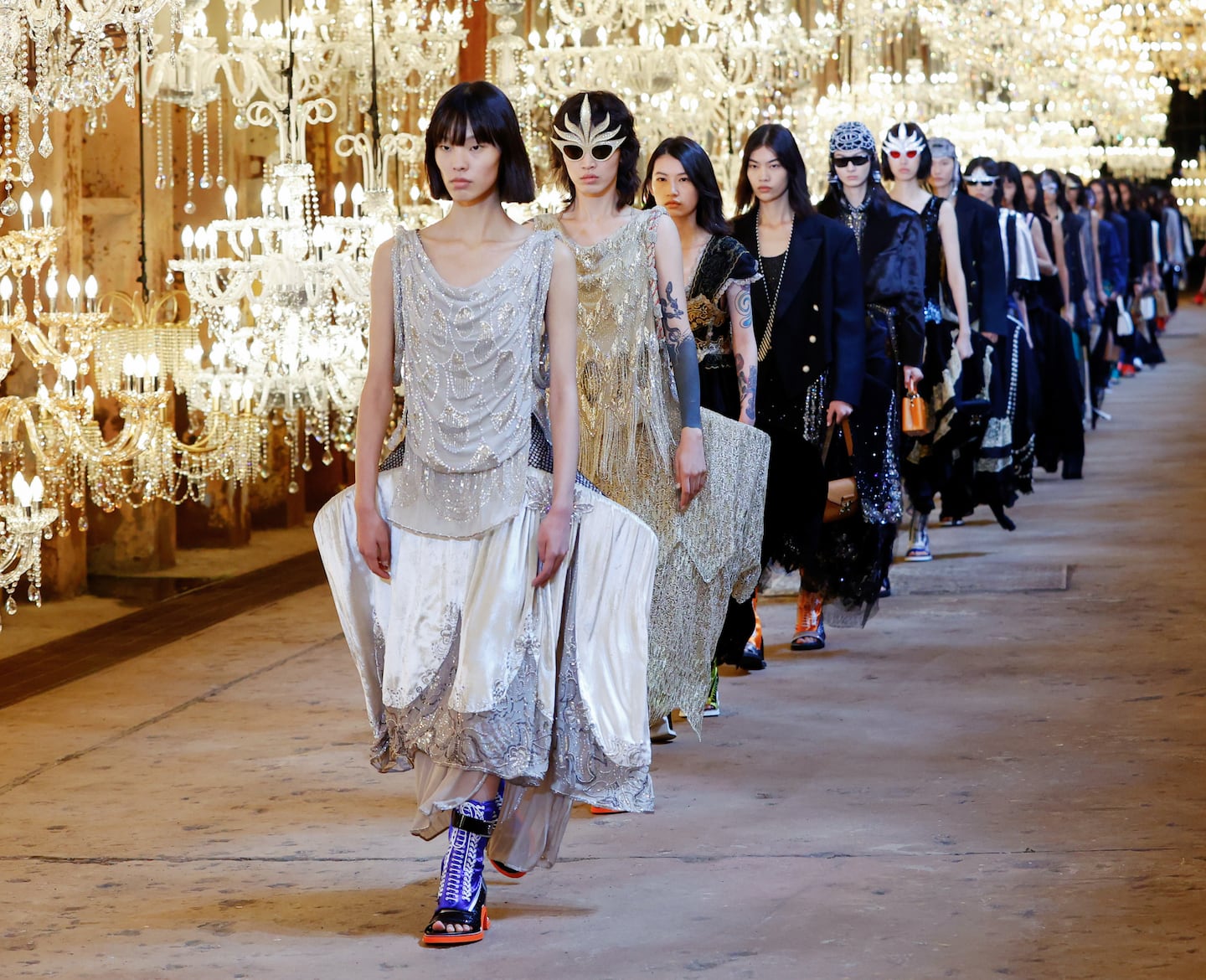
The Business of Fashion
Agenda-setting intelligence, analysis and advice for the global fashion community.

Agenda-setting intelligence, analysis and advice for the global fashion community.

Shanghai’s shipyard repair docks were transformed on Wednesday evening, adorned with more than one thousand chandeliers to serve as the backdrop for the latest outing of Louis Vuitton’s Spring/Summer 2022 collection.
On top of the 43 looks originally shown in Paris, an additional 19 were designed by Nicolas Ghesquière for the Shanghai show. Louis Vuitton’s creative director wasn’t in attendance but sent a recording of his best wishes to the crowd of celebrities, media and Louis Vuitton’s top-spending local clients in attendance.
In total, around 1,000 people were at the show by the banks of the Huangpu River, with house ambassadors Liu Yifei and Zhou Dongyu (who was announced as a house ambassador by Louis Vuitton the day of the show), alongside other celebrity attendees, including Dilraba Dilmurat, Zhang Ziyi and Ouyang Nana driving social engagement. At the time of writing, the campaign hashtag #LVSS22WomenswearShow has more than 500 million views.
According to the brand, livestreams of the show, which was closed by Chinese supermodel Ju Xiaowen and simultaneously broadcast on platforms Weibo, WeChat, Tencent Video, Douyin, Kuaishou and OTT, were viewed 158 million times.
ADVERTISEMENT
Learn more:
How Did LVMH Fashion Get Back to Double-Digit Growth Already?
The answer has a lot to do with Louis Vuitton, Dior and the Chinese market. BoF breaks down the key factors behind the rebound.
With consumers tightening their belts in China, the battle between global fast fashion brands and local high street giants has intensified.
Investors are bracing for a steep slowdown in luxury sales when luxury companies report their first quarter results, reflecting lacklustre Chinese demand.
The French beauty giant’s two latest deals are part of a wider M&A push by global players to capture a larger slice of the China market, targeting buzzy high-end brands that offer products with distinctive Chinese elements.
Post-Covid spend by US tourists in Europe has surged past 2019 levels. Chinese travellers, by contrast, have largely favoured domestic and regional destinations like Hong Kong, Singapore and Japan.